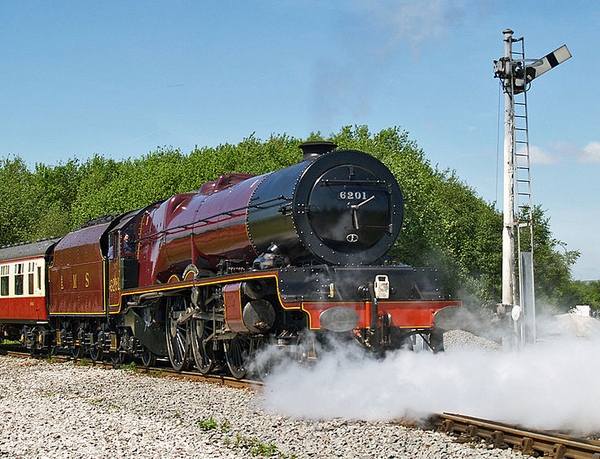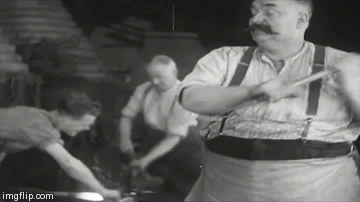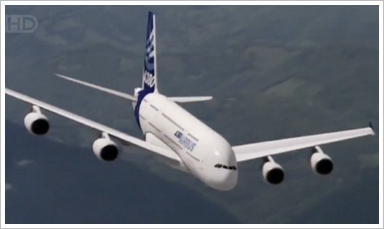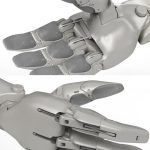If there is one profession which has had a huge impact on modern civilization, surely it must be the engineer? In under a century, these unsung heroes have propelled us from an almost primitive parochial lifestyle, to one where we think nothing of traversing the world in less time than it takes to visit the dentist. But when we look back at the early days of engineering driven industrial production, is it really that different to today?
We recently stumbled upon an absolutely delightful video documentary (hat tip Hubski) which details the painstaking work needed to create a LMS Princess Royal Class steam locomotive back in 1933. The work was physically demanding, even grueling, and the tools ridiculously primitive compared to today.
Gangs of men working on white hot metal with no protective clothing, gloves or any kind of hardened safety surroundings? Absolutely astonishing! It makes for a totally compelling video, and just check out the face furniture on that amazing smithy!
But as we were watching the marvelous ingenuity involved in the process, we were reminded of another video we had also watched a while ago, which dealt with an altogether more modern feat of genius.
The second video documents the massive effort required to build the world’s largest passenger aircraft, the Airbus A380. The tools used may have evolved over 80 years into state of the art computing and space science materials, and the scale may dwarf that of the humble steam train, but the similarities between the two processes are definitely surprising.
https://youtu.be/WSmV2h1Q-a0
The locomotive starts life on an engineer’s desk, requiring 370 technical drawings all done by hand, which in turn lead to 361 pages of specifications covering 2500 items. But like the A380, the train is built by multiple suppliers, who then ship their components in to a central assembly plant. The A380 begins as a computer drawing, moves into simulation and becomes virtually real in every aspect in digital form, before any metal or composite is ever touched.
But at the end of the day, both products are the result of men putting hands to tools, rivets and machinery to wrestle the various components into a final whole.
Where the locomotive was crafted from a core of hardened steel and weighs in at 100 tons, the A380 is made of advanced ultra lightweight composite materials, and finishes up with a total weight of 305 tons. The A380 can transport up to 800 passengers over 8500 miles non-stop at a cruising speed of 525 mph, the Princess Royal locos (fondly nicknamed ‘Lizzies’ because of the connection with the UK Royal family) were designed to transport 400 passengers or more at 80 mph from London to Scotland.
Both products have impeccable pedigrees, and the similarities between the production process seen on the two videos is surprising, considering how much has changed over time. The end result is a fascinating look at two human endeavors which still have their roots buried deep in historical practices.
Our only question is this. What happens to the human condition when we automate everything that can be automated? What is everyone supposed to do with themselves?






